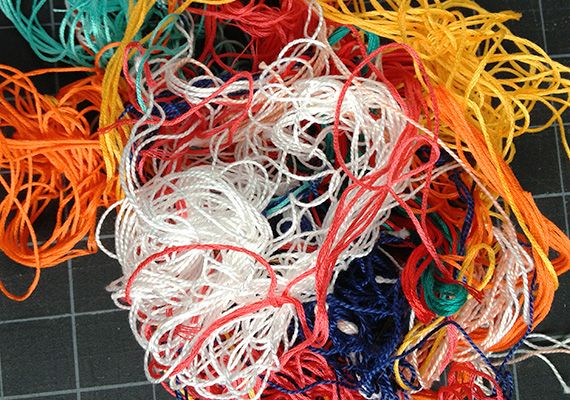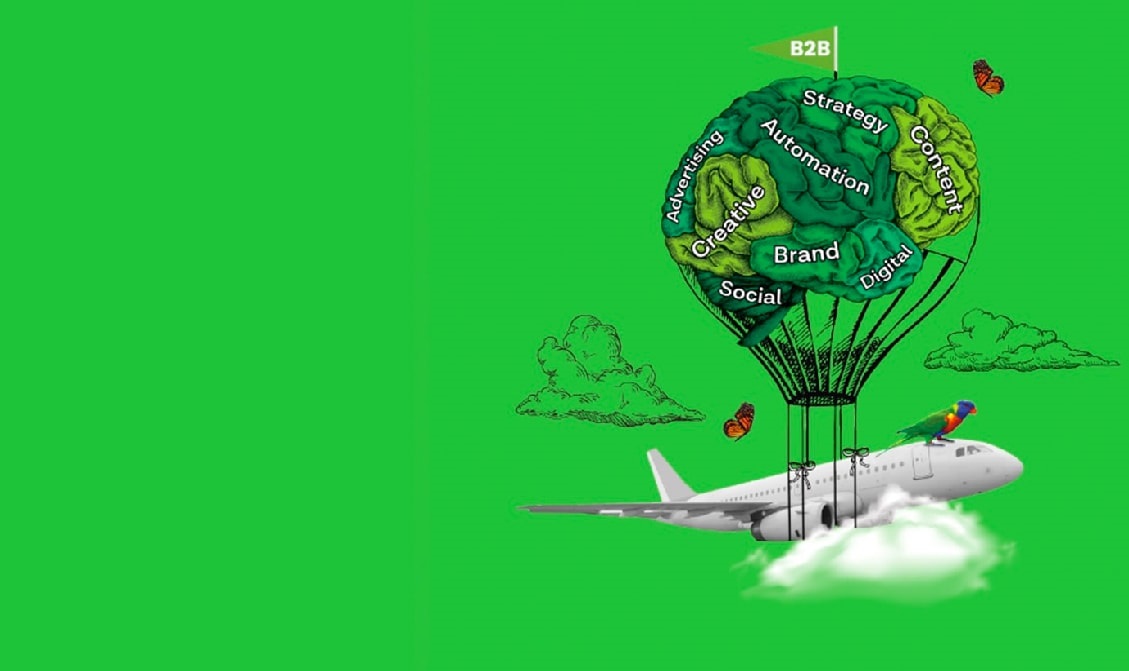Have you ever heard different people describe the same movie? Most likely, they’ll give wildly different accounts of what happened in the story. So different, in fact, you may even wonder if they’re talking about the same movie.

Pictured: The world’s greatest detective and crime-fighting genius. Or militant billionaire who cosplays as a bat and assaults the mentally-ill. Both perspectives are technically correct.
The same thing happens in countless B2B conversations every day. Brands communicate in all sorts of haphazard ways, without a clear value proposition. Prospects can find themselves trying to sort through a tangled mess of confusing or conflicting messages, leaving them unsure what your business is all about and what you’re selling or offering.

Pictured: Typical B2B messaging ecosystem.
The last thing you want to do is give your prospect more homework and make them sort through your content to figure out if you can solve their business problem. That’s why honing your brand’s messaging strategy is so important.
Without some system to keep your messaging consistent, you’ll find sales, marketing or product people (or even CEOs!) going rogue and firing off their own interpretations of what the company offers. This is not a trivial problem. As your business scales, your marketing, sales and product teams get bigger and bigger, the problem grows exponentially.
One of the most critical marketing activities a company must do is consistently communicate a distinct value proposition, both internally and externally.
A messaging framework is how you do that.
It’s the bridge between your buyer personas and your content strategy. In a single document, it summarises your brand’s unique value proposition, differentiates you from your competitors, and describes what the different segments of your audience should hear in different situations.
How your messaging framework creates a business advantage
Your messaging framework (also known as messaging matrix, messaging architecture, or just messaging) is the foundation of all sales and marketing communications. It ensures your personas always receive the message that resonates with them by putting their needs first. At the same time, it builds a consistent brand narrative, no matter how many product areas and territories your business expands into.
This shift in thinking can be jarring for B2B businesses in the growth stage. You’ve been focusing on the hard-sell, with product-first messaging, and it’s been working great, so why change? The simple reason is that as your business offering grows in size and complexity, you’re going to find your product use-cases multiplying like rabbits.

Pictured: B2B marketer herding product use-cases.
Your product is going to be applied to all kinds of industries, situations and customers in all kinds of different ways. Soon, product-led comms are going to limit your growth. You’ll find you need to lead with customer-centric content first if you want to gain any traction.
Sales and marketing alignment also becomes a huge challenge at scale. The Green Hat/AMI B2B Marketing Research Report 2020 found that only 46% of marketers surveyed indicated that sales and marketing were truly strategic partners in business growth.
Both teams have different approaches to the same audience. If they’re not aligned, your customer will find themselves battered with confusing conversations and wonder why you guys don’t have your sheets together. A messaging framework will help keep your stories straight and make sure your customer has a seamless experience throughout the buyer’s journey.
Good messaging is the foundation of good UX.
This level of clarity and relevance is a game-changer for your audience. Not only will your searchability improve, but your audience will also be delighted to find straightforward answers to their most pressing questions. They’ll instantly be able to recognise your brand and know exactly what you offer. This positions your brand as a thought-leader and expert in your domain, making your brand even more compelling to your prospects.
How do you create a B2B messaging framework?
Content is context. We need to make sure our audience sees the right content at the right time in their buyer’s journey. That means we need to anticipate their needs and align our messaging accordingly.

Pictured: B2B prospect trying to make sense of unstructured brand messaging
Their needs will obviously be different at different stages of the journey, and different for different audiences. But the cool thing is, we can create a structure to do this. Since B2B environments can vary enormously, there is no one-size-fits-all messaging framework. But there is a process we can follow to arrive at the right framework for our particular environment.
Step 1: Get the right customer experience stakeholders together
A messaging framework is a team sport, and it needs input from the people who have experience with the customer. That means you’ll need the buy-in from key people in marketing, sales, and the C-suite. This framework is going to define your customer’s relationship with your brand. It needs the involvement of the big guns.
Step 2: Identify your customer value proposition
Your customer value proposition (CVP) is your brand’s answer to the simplest and toughest question: why should the audience care? The essence of a CVP is sacrifice. You need to whittle down your brand to its most basic essence. The CVP then serves as a compass, guiding not just customer conversations, but also your internal team. It enables you to check if any new proposed products or services are consistent with your brand and your customer.
Step 3: Validate your customer personas (bonus points if you have your customer journey worked out)
Do you have your ideal customer profile (ICP) ready? Have you prepared and double-checked your personas? If you have, that’s awesome! You’re already miles ahead of the competition. Depending on your goals, you may not need a validated customer journey at this point, but having one is highly recommended. It will bring a lot of clarity to your messaging structure, and enable you to be more precise with your content.
Step 4: Build your messaging framework
Now that you have all the information you need, you need to frame it. This means taking the important parts of your value proposition, tailoring your messages to your personas, and placing them along the customer journey.
You can slice and dice your messaging framework in many ways. One way, for example, is to classify your messaging and content into three broad categories:
Early-stage
This is where you make your first impression on your audience. This is the place for your thought-leadership content, which stresses the narratives and stories that will grab your audience’s attention.
Mid-stage
This is where your audience is looking for specific answers to a problem they have. It’s your chance to show how you’ve solved similar problems for others. Things like case studies, whitepapers, proof points, and how-tos can be quite valuable at this stage.
Late-stage
This is the promised land: the stage where your audience is familiar with your brand and trusts that you can help solve their problem. The only thing left is the ‘how’. This is where your product-specific messaging comes in. Here you can talk about specific products, product features, user benefits, demos, all the good stuff.
Now your sales, marketing and content folks know exactly what story to tell a customer based on where they are in their journey. Your customer will marvel at your ability to read their minds (maybe) and will be glad they’ve found a brand that gets right to the point and tells them what they want to know.
Test, refine and evolve
Once your framework is in place, it’s time to put it to the test. Start advertising on your chosen marketing platforms using the messages in the framework. You’ll be testing on three fronts: the channels you use, the audience you target, and the content you share. Your initial results will be a big help in refining your messaging framework.
As your business evolves and your customer’s needs change, your messaging will evolve as well.
That means the framework will need regular reviews with your company’s customer-facing stakeholders and updated accordingly. It can be challenging to set it up and get it going, especially if you’re dealing with a variety of strong-willed stakeholders who each bring their own perspective to the table.
That’s where having a strong content marketing partner can come in handy. If you want a messaging framework that helps your brand become the hero your audience needs, just get on a rooftop and shine a giant green light into the clouds. Or alternatively, call 03 9290 9777 or contact us.
.png)
 Content Marketing
Content Marketing






